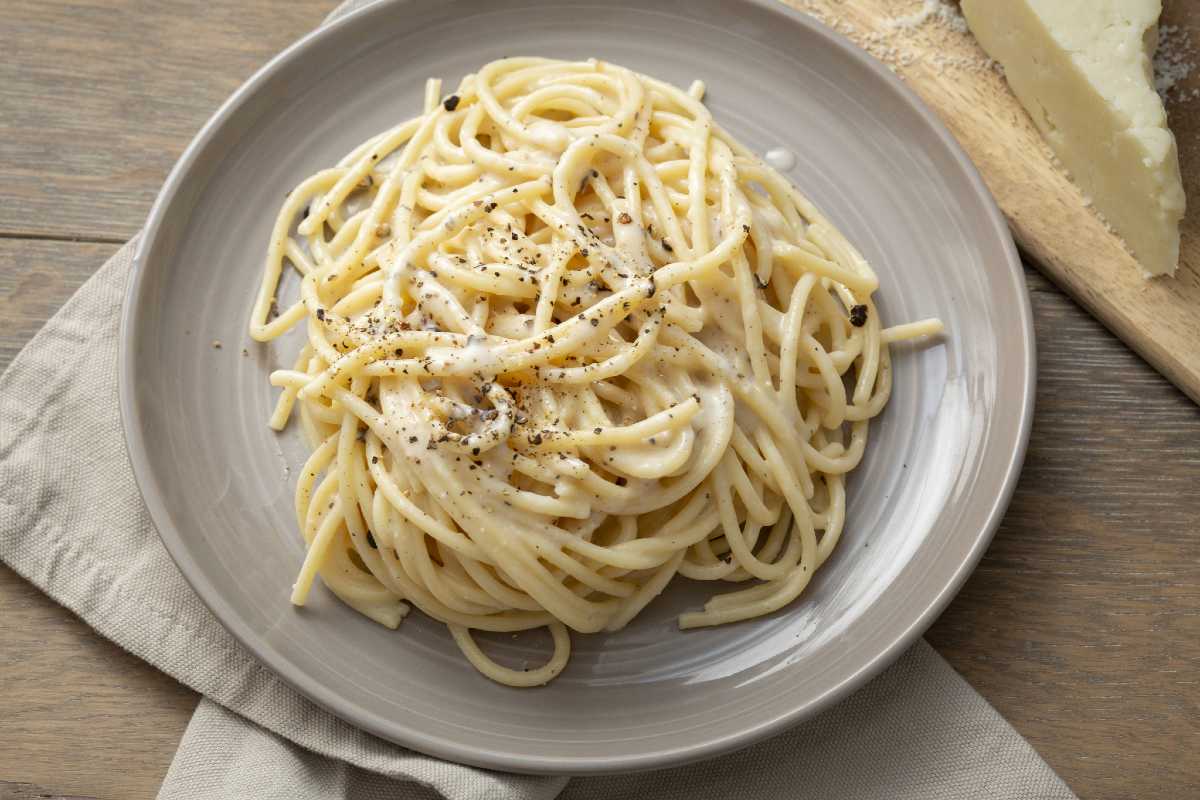Pasta allo scarpariello
- Very easy
- 20 min
- Kcal 542

Cacio e Pepe, meaning "cheese and pepper," is the ultimate example of simplicity meeting bold flavors in Italian cuisine. Originating from Rome, this traditional pasta dish has captivated food lovers for centuries with its creamy texture and robust taste. Made with just three ingredients—pecorino Romano cheese, freshly cracked black pepper, and pasta—it showcases the beauty of high-quality, minimal ingredients.
Perfect for weeknight dinners or impressing guests, Cacio e Pepe is a quick recipe that delivers gourmet results. Its secret lies in the technique: combining hot pasta water with grated cheese to create a silky, luscious sauce that clings to every strand of spaghetti or tonnarelli.
Carbonara, the Amatriciana and Pasta alla Gricia, like spaghetti cacio e pepe, have by now become dishes that symbolize the Italian spirit, of eating well with “Protected Designation of Origin” ingredients and linked to traditions and territories where they originated.
Want to taste a variation of this classic dish? Let's try our cacio e pepe spaghetti with shrimps!

To prepare spaghetti cacio e pepe, first of all grate the Pecorino cheese. Continue boiling some water in a pan (use about half of what you usually use to cook pasta, so it will be richer in starch) and when it boils you can add salt to taste. Once salted, you can cook the spaghetti 1. In the meantime, pour the whole peppercorns on a cutting board 2, then crush them with a meat pestle or a grinder 3. This will release more of the pungent scent of the pepper.

Pour half of the crushed pepper into a large non-stick pan 4, toast over low heat stirring with a wooden spoon, then add a couple of ladles of cooking water 5. The bubbles you see appearing are from the starch contained in the water. Drain the spaghetti when it is very al dente (keeping the cooking water aside to use later) and pour the pasta directly into the pan with toasted pepper 6; it will continue cooking with the seasoning.

Stir the pasta continuously with the kitchen tongs to make it “breathe" 7 and add a ladle of water or two if necessary, to continue cooking 8. Keep pouring a ladle of water only when needed (when you see that the pan is almost completely dry) and stir with kitchen tongs. In the meantime, when the pasta is ready, prepare the Pecorino cream (don't start this operation before because the cream would get too thick): pour about half of the grated Pecorino cheese into a bowl 9.

Add a ladle of cooking water to the grated Pecorino cheese 10. Stir vigorously with a whisk 11 and add more water when needed. Then add the remaining half of the Pecorino cheese, keeping a little bit aside to garnish later 12. Add a little more water if needed: at this stage you will have to carefully adjust the amount of Pecorino cheese to the water to obtain a cream of the right consistency and without lumps.

Finish cooking your pasta, adding a little more hot water if necessary; before adding the Pecorino cream, briefly stir the cream by placing the bowl over the steam of the pan with hot water, always stir with the whisk 13, so as to bring the cream back to a temperature similar to the one of your pasta if necessary 14. Turn the heat off under the pan with spaghetti and pour in the Pecorino cream 15.

While pouring the Pecorino cream onto your spaghetti, stir it continuously with the kitchen tongs 16, pour the Pecorino you kept aside in too 17, stir and sauté the pasta again, then transfer your spaghetti cacio e pepe to a plate and season with the remaining pepper, enjoy immediately in all its creaminess 18!